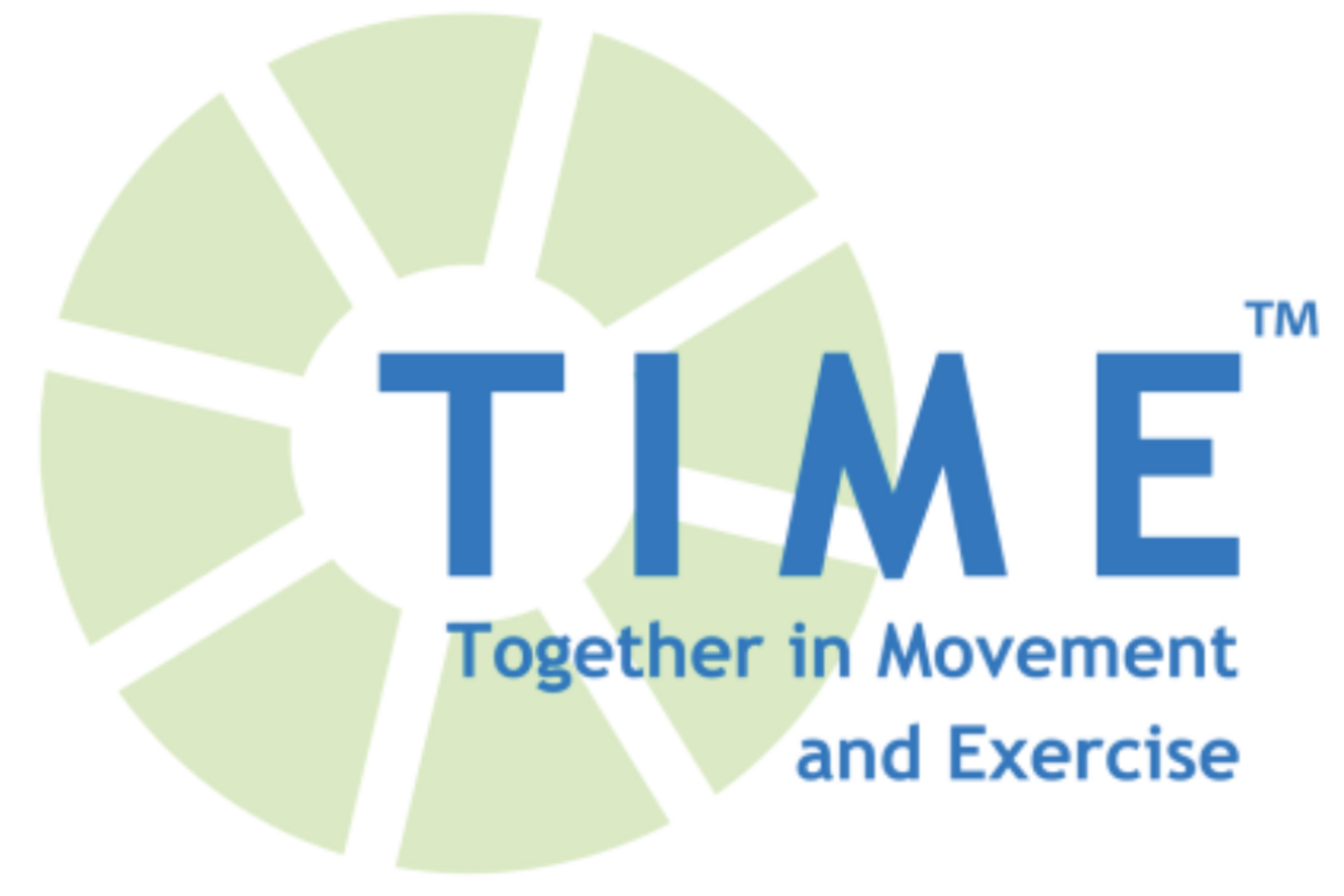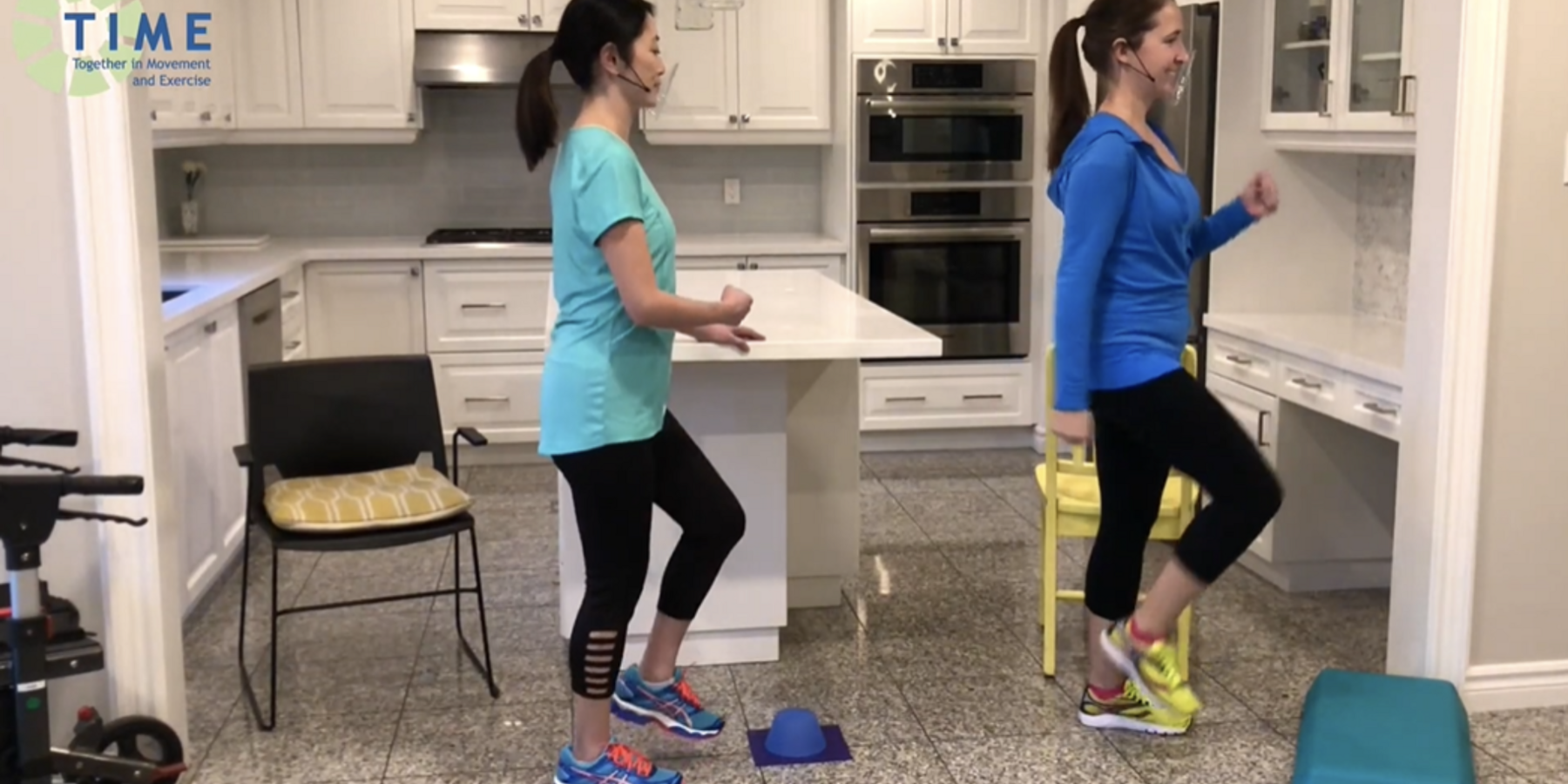Main Second Level Navigation
Breadcrumbs
- Home
- Research
- Programs of Research
- Knowledge to Action Research
- TIME at Home: A Before-and-After Feasibility Study
TIME at Home: A Before-and-After Feasibility Study

Full Project Title
Virtual delivery of a task-oriented, community-based exercise program incorporating a healthcare-community partnership for people with balance and mobility limitations: Feasibility of the TIMETM at Home Program
Trial Registration: http://www.clinicaltrials.gov. Unique identifier: NCT05369741
Background
Access to exercise programs in the community that are safe and beneficial for people with balance and mobility limitations is limited by inclement weather, inadequate transportation and social support, and cost. Task-oriented exercise targeting balance and mobility is ideal to perform at home as it involves the practice of functional tasks relevant to daily living and requires equipment that is commonly available in the home. Online delivery of task-oriented exercise programs using a hybrid model wherein a live facilitator uses zoom to stream a pre-recorded exercise video for a group of participants and moderates a pre- and post-program social time addresses multiple barriers to exercise participation facing older adults.
Objectives
We are evaluating the safety and feasibility of a hybrid, group-based, 8-week, virtual, task-oriented community exercise program called TIMETM at Home among people with balance and mobility limitations. TIMETM stands for Together in Movement and Exercise.
Methods
We are conducting a study incorporating a single-group, pre-post, mixed-methods design in collaboration with March of Dimes Canada. We are inviting community-dwelling adults with balance and mobility issues from chronic health conditions, such as stroke, multiple sclerosis, and arthritis, along with their caregivers to participate. Individuals must sign a waiver and view a safety video prior to registering. Two 1.5 hour sessions are scheduled twice a week for 8 weeks. Two program facilitators moderate online interaction of a group of up to 10 participants before and after streaming a 1-hour exercise video. The video shows a 10-minute seated warm-up, 40 minutes of exercises, and a 10-minute seated cool down. Exercises are performed in standing and involve everyday movements (e.g., sit-to-stand, step-ups, walking), with standardized progressions, deemed safe by rehabilitation experts to be performed at home without supervision. In the video, 2 therapists (a physiotherapist and an occupational therapist) demonstrate the exercises. One therapist demonstrates a more challenging version and one therapist demonstrates a gentler version of each exercise. Participants are asked to self-pace and self-select from the demonstrated exercises. A healthcare partner, who is a registered healthcare professional, makes three e-visits.
Participants will complete two evaluations with a study partner (family member/friend) present via zoom at baseline and immediately after the 8-week exercise program. We are evaluating functional mobility and lower limb strength using the Timed ‘Up and Go’, and the 30-second sit-to-stand test, respectively. We are also evaluating everyday functioning, self-perceived health status, balance self-efficacy, and depressive symptoms using the Subjective Index of Physical and Social Outcome, EuroQuol visual analogue scale, the Activities-Specific Balance Confidence scale, and the Center for Epidemiological Studies Depression scale, respectively. We are asking caregivers to complete the Center for Epidemiological Studies Depression scale pre- and post-program.
To explore perceptions of different stakeholder groups of the TIMETM at Home program, including acceptability of the program, perceived benefits, feasibility of facilitator role and healthcare and community partnership, we will conduct qualitative focus groups or interviews with: a) healthcare partners; b) March of Dimes Canada coordinators; c) program facilitators; d) exercise participants; and e) caregivers of exercise participants. All focus groups/interviews will be conducted within 3-4 weeks of completion of the exercise program.

Team Members
Principal Investigators
- Nancy Salbach, University of Toronto (Nominated PI)
- Ruth Barclay, University of Manitoba
- Joyce Fung, McGill University
- Allyson Jones, University of Alberta
- Navaldeep Kaur, University of Toronto (Postdoctoral fellow)
- Heidi Sveistrup, University of Ottawa
- Robert Teasell, Western University
- Mark Bayley, University Health Network (Knowledge User PI)
Co-investigators
- Gayatri Aravind, March of Dimes Canada
- Jill Cameron, University of Toronto
- Brian Chan, University Health Network
- Susan Hunter, Western University
- Elizabeth Inness, University Health Network
- Susan Jaglal, University of Toronto
- Rahim Moineddin, University of Toronto
- Sarah Munce, University Health Network
- Jennifer O’Neil, Bruyère Research Institute
- Lisa Sheehy, Bruyère Research Institute
Knowledge Users
- Margot Catizzone, University Health Network
- Nancy Cox, Centre intégré universitaire de santé et de services sociaux (CIUSSS) Centre-Ouest-de-l'ile-de-Montréal
- Heather Hanson, Seniors Health Strategic Clinical Network™
- Michelle Nelson, March of Dimes Canada
- Alda Tee, Central East Stroke Network
- Amanda Woo, University Health Network
- Joanne Zee, University Health Network
Partners
- Heart & Stroke Foundation of Canada
- March of Dimes Canada
- University Health Network
Funding
- Heart & Stroke Foundation of Canada
- Government of Ontario
- Ontario Physiotherapy Association
- University of Toronto